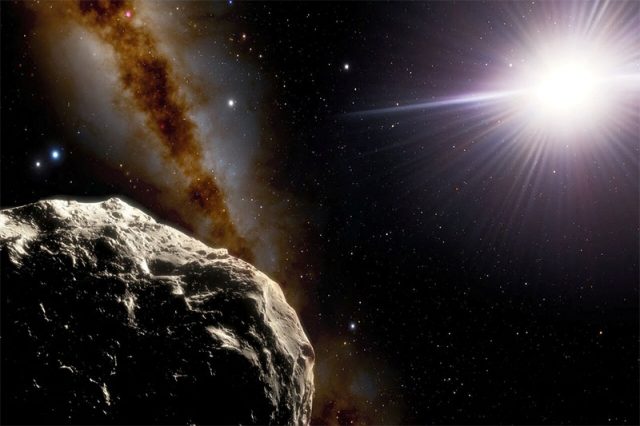[ad_1]

WASHINGTON — An asteroid that was found using alongside in Earth’s orbit is about three-quarters of a mile (1.2 km) vast and would possibly stay as a hitchhiker with our planet for no less than 4,000 extra years whereas posing no hazard, scientists stated on Tuesday.
Utilizing observations from telescopes in Chile, Arizona and the Canary Islands, researchers offered essentially the most complete description but of the asteroid, named 2020 XL5 and first detected two years in the past. They confirmed it’s one in all solely two of what are known as Trojan asteroids touring as a companion with Earth.
Trojan asteroids may be wanderers within the photo voltaic system – as seems to be the case with this one – or materials left over from their residence planet’s formation. They grow to be ensnared by the planetary gravitational grip and subsequently orbit the solar alongside the identical path as that planet.
This one appears to be like to be a so-called C-type asteroid – one of the widespread sorts within the photo voltaic system, in keeping with planetary scientist Toni Santana-Ros of the College of Alicante and the College of Barcelona’s Institute of Cosmos Sciences in Spain, lead writer of the examine printed within the journal Nature Communications.
These are darkish in coloration and include a variety of carbon together with rocks and minerals.
“2020 XL5 poses no risk to Earth. We anticipate it can stay in its present secure orbit for no less than the subsequent 4,000 years,” stated telescope scientist and examine co-author Cesar Briceño of the U.S. Nationwide Science Basis’s NOIRLab.
Its location varies between about 56 million miles (90 million km) and 168 million miles (270 million km) from Earth.
The asteroid occupies one in all 5 so-called Lagrange factors – positions in area the place objects have a tendency to remain put. These 5 locales enable for secure orbits because of the competing gravitational forces of Earth and the solar. This one resides at what known as the L4 level.
The one different Trojan asteroid seen round Earth, found 12 years in the past, additionally on the L4 level, and known as 2010 TK7, is smaller, with a diameter of a few quarter mile (400 meters). It, too, is assumed to have been captured by Earth’s pull whereas meandering by means of the photo voltaic system.
2020 XL5, first detected in December 2020 utilizing a telescope in Hawaii, could have been captured by Earth’s gravitational pull someplace between 500 to 1,000 years in the past, Santana-Ros stated.
Quite a few Trojan asteroids populate our photo voltaic system, with the biggest planet Jupiter identified to have virtually 10,000 of them, Santana-Ros stated. NASA launched a spacecraft known as Lucy final October to discover them. Trojan asteroids even have been discovered round Neptune (28 of them), Mars (4), Uranus (two) and Venus (one).
“Jupiter is a huge in all senses, additionally when it comes to mass. It cleaned its neighboring area of different objects and gathered 1000’s of objects on its L4 and L5 factors,” Santana-Ros stated. “Nevertheless, the Earth has a extra delicate setting, with shut gravitational opponents like Venus, Mars and even the moon. Subsequently, gravitational perturbations on 2020 XL5 will finally enable this object to flee from the L4 stability level.”
Santana-Ros stated there could possibly be extra Trojan asteroids round Earth awaiting detection. The 2 Lagrange factors the place they may exist, L4 and L5, are notoriously tough to watch from Earth.
“Any asteroid orbiting round these factors will solely be seen throughout a short while window near twilight, at very low elevations above the horizon,” Santana-Ros added. “But when we level our largest telescopes low above horizon and near twilight I’m sure we’ll discover extra surprises.”
—Reporting by Will Dunham, Modifying by Rosalba O’Brien
[ad_2]
Source link
















